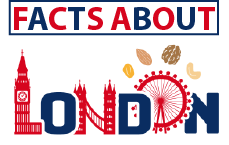Introduction:
When we think of boroughs, the iconic image of London’s diverse neighborhoods often comes to mind. However, administrative divisions known as boroughs extend beyond the boundaries of the UK’s capital. In this blog post, we’ll delve into the concept of boroughs, exploring whether they are exclusive to London or if similar divisions exist in other parts of the United Kingdom.
Boroughs in London:
London is a city renowned for its rich history and cultural diversity, and its administrative structure reflects this diversity. The Greater London area is divided into 32 boroughs and the City of London, each functioning as a distinct administrative unit. Boroughs in London have their own local councils responsible for various services, including education, housing, and public health.
Boroughs Across the UK:
While the term “borough” is closely associated with London, similar administrative divisions exist in other parts of the UK, often under different names. In England, you’ll find county boroughs and metropolitan boroughs, each with its own local governance structure. These divisions play a crucial role in local administration, ensuring that communities have a say in the management of public services.
County Boroughs:
Historically, county boroughs were separate entities, independent of the administrative counties that surrounded them. However, local government reorganizations in the 20th century led to the incorporation of many county boroughs into larger metropolitan and non-metropolitan counties. Some examples of areas that were once county boroughs include Manchester, Liverpool, and Bristol.
Metropolitan Boroughs:
Metropolitan boroughs are administrative divisions found in metropolitan counties. These counties, including Greater Manchester and West Midlands, consist of metropolitan boroughs that share responsibilities for local governance. Each metropolitan borough has its own local council overseeing services and decision-making processes.
Unitary Authorities:
In addition to county and metropolitan boroughs, the concept of unitary authorities is prevalent in the UK. Unitary authorities operate as single-tier local authorities, meaning they are responsible for all local government functions within their boundaries. Examples include Bristol and Plymouth, which, despite being cities, function as both the city and the surrounding borough.
Boroughs in Scotland:
Scotland, with its unique legal and administrative system, uses the term “burghs” instead of boroughs. Burghs are a historical concept that has evolved into modern council areas and their constituent communities. These council areas, like those in England, have local councils that manage various public services.
Conclusion: Boroughs Across the Isles
While the term “borough” is strongly associated with London, administrative divisions with similar functions exist throughout the UK. Whether they are called boroughs, county boroughs, metropolitan boroughs, or burghs, these divisions play a crucial role in local governance. They empower communities, giving residents a voice in the decision-making processes that shape their daily lives. So, while London’s boroughs are iconic, the spirit of local representation extends far beyond the bustling streets of the capital.

Author: Jon Tabner
Hi! I’m Jon Tabner, I am a Graphic Designer, Blogger and Marketing Executive in profession. Exploring new things, innovation and designing is my passion. Now working as head of Graphic Designing & Marketing Executive team at Print In London and currently I am based in London. I love using my design knowledge to inspire small businesses to think outside the box when designing their print.

